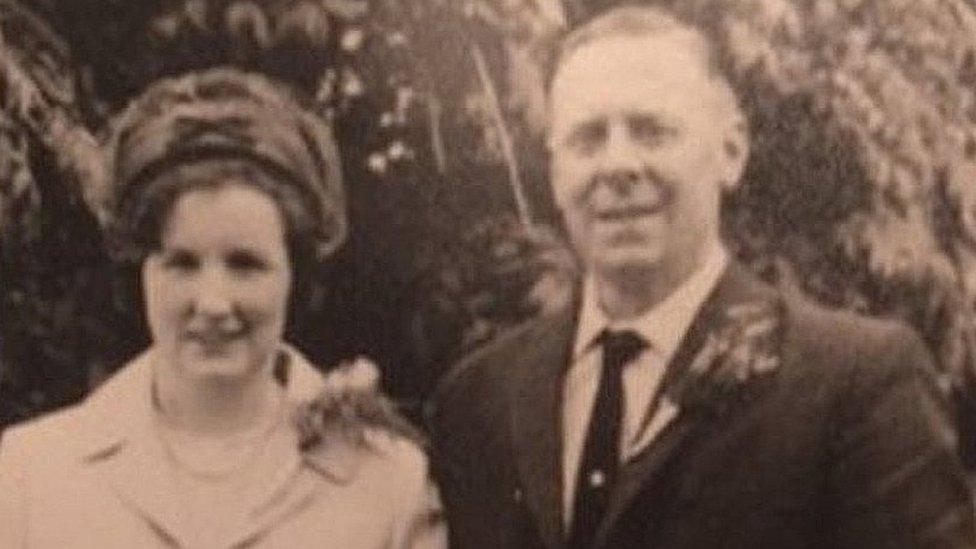Ballymurphy shootings 'would have been bad day's work'
- Published
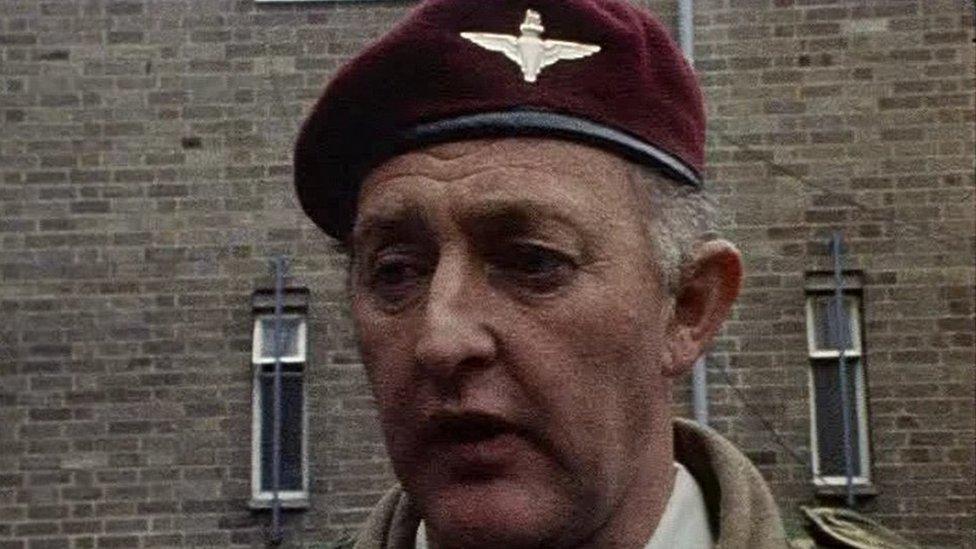
General Sir Geoffrey Howlett was commanding officer of the 2nd Battalion the Parachute Regiment in 1971
A former commander of paratroopers in Ballymurphy has accepted it would have been "a bad day's work if everyone his soldiers shot were the wrong people".
Gen Sir Geoffrey Howlett was giving evidence to the Ballymurphy inquest for the second day.
The inquest is examining the deaths of 10 people in west Belfast in 1971.
Gen Howlett was responding to a question by a barrister for the family of Joan Connolly, the only woman killed in the shootings.
He also said paratroopers who had fired shots at civilians were "quite excited" when he, their battalion commander arrived at the scene shortly afterwards.
Gen Howlett was commanding B Company 2 Para based at Henry Taggart Hall on the Springfield Road on the day internment was introduced in August 1971.
Mrs Connolly, Joseph Murphy, Noel Phillips and Danny Teggart all died after being shot during the incident.
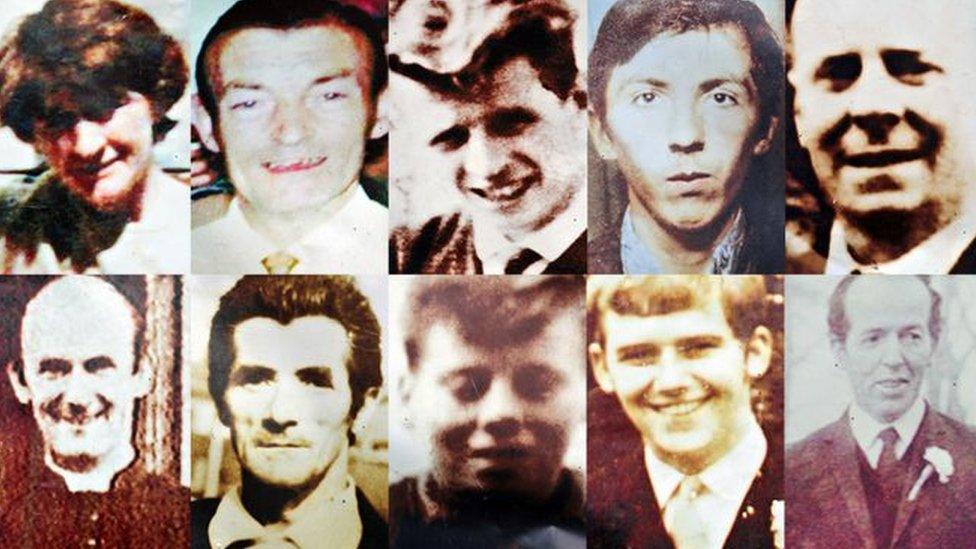
Ten people were killed in the shootings in Ballymurphy in August 1971
Father Hugh Mullan and Frank Quinn were also shot some distance away near Springfield Park on the same evening.
Gen Howlett said his soldiers were not celebrating the shootings and were not "on a high".
"They thought they had done their duty well and were pleased," he said.
Gen Howlett was read the testimony of a man, Gerard Russell, who was shot and taken into the base.
He said that he and others were repeatedly kicked and beaten by the soldiers inside, until an army chaplain intervened to stop it.
The general said he had been unaware of this at the time.
"I'm not trying to pretend for a moment that my paratroop soldiers were saints," he said.
"I hope that my soldiers would be obedient, do what they were told, and act toughly but reasonably."
Gen Howlett repeated his belief that the people shot outside the base were not in the IRA, but that some may have been "associated" with the IRA.
By "associated" he said he meant someone rioting alongside IRA gunmen, "in sympathy and helping them".

Soldiers from the Parachute Regiment were based at Henry Taggart Army base
He accepted that Fr Hugh Mullan was not a member of the IRA, and accepted "the probability" that Fr Mullan was not associated with the IRA.
"I do not believe he was shot on purpose" he said.
He further added that a man like Frank Quinn, shot while beside Father Mullan and trying to help him, and possibly killed by the same bullet, could still have been associated with the IRA.
There was surprise among family members in court at his answers on this matter.
At one point the coroner asked the general how he could come to that view about association.
He said that any armed group bringing "first aiders" with them could expect those people to be considered associated with them.
He accepted that that did not mean they should be shot.
The general said the situation at the time was "almost warlike conditions".
He was later challenged at length about the degree to which he examined how and why Fr Mullan had been shot.
Asked if he didn't care that his soldiers had shot unarmed civilians, and if he hadn't been a responsible commanding officer, the general disagreed.
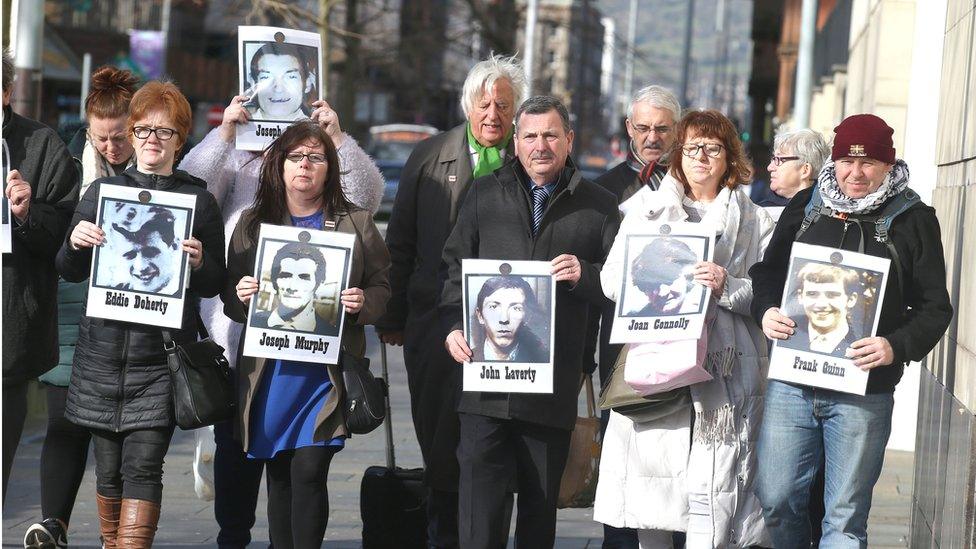
Families of the victims walk to the inquest on Tuesday
"I cared immensely what my soldiers did, and I cared immensely when innocent civilians were killed." he said.
The general was asked to comment on the death of Joan Connolly, a 44-year-old mother of eight whose eldest daughter was married to a British soldier.
"I am certain from my experience of my soldiers that she was not shot on purpose," he said.
"The shot or shots were fired deliberately but not necessarily at her."
Some of the families were upset by the general's thoughts on "IRA association".
The comments were later clarified by a barrister for the Ministry of Defence and a barrister for the coroner.
Gen Howlett agreed that someone simply caught in the crossfire and shot would not, in his view, have been associated with the IRA.
He also agreed that someone coming to the assistance of an innocent person could not be considered to be associated with the IRA.
He has now completed his evidence.
'Saving lives'
Later the inquest heard from a former soldier known as witness M45.
The former major in charge of B Company 2 Para has been granted anonymity and screening by the coroner.
He retired as a Lt Col.
He described the first day of internment, and how his men arrested 18 suspects early in the morning.
He recalled that the rest of the day saw prolonged rioting at the Henry Taggart base which they tried to repulse with rubber bullets and CS gas.
The court was shown film footage from 1971 showing some of the rioting.
He explained that he didn't believe any of his men could have fired the shots which struck and killed Father Hugh Mullan, simply because too many buildings and other obstacles were in the way.
He described the prolonged period of gunfire which he said started with shots at both Vere Foster and Henry Taggart bases.
M45 was in Vere Foster during the gunfire and said it was too dangerous to walk down a path connecting it with the Henry Taggart base.
He did explain that Lt M42 had allowed his men to open fire "to save their lives".
The court heard how he provided his own briefings to his men on when they would be allowed to fire their weapons, rather than relying on the so-called yellow card.
"You cannot deal with a riotous situation if you're looking all the time at a yellow card." he said,
"That is the danger of deploying soldiers in civil situations." he added.
M45's evidence continues tomorrow.
- Published11 May 2021
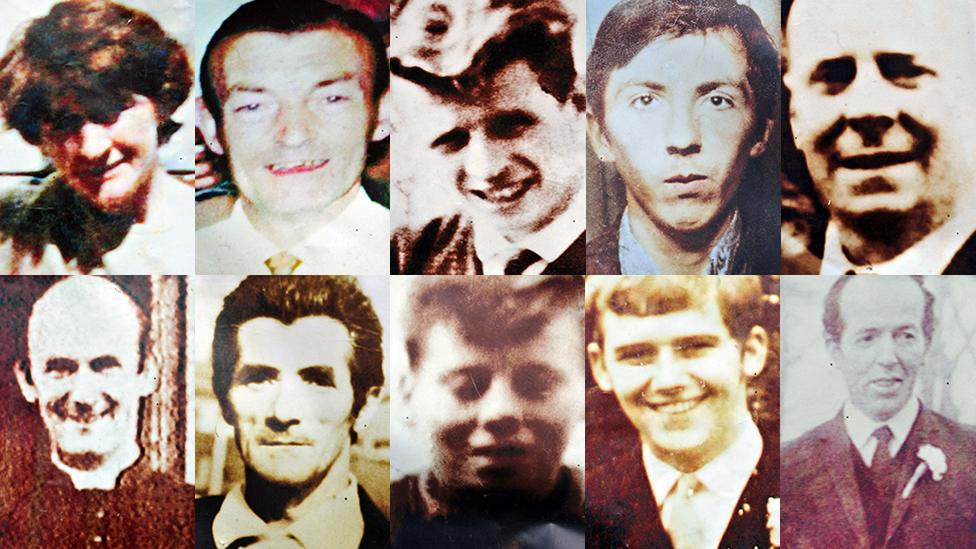
- Published5 February 2019

- Published19 December 2018
